Gastropod looks at food through the lens of science and history.
Co-hosts Cynthia Graber and Nicola Twilley serve up a brand new episode every two weeks.
Co-hosts Cynthia Graber and Nicola Twilley serve up a brand new episode every two weeks.
You've seen the headlines: fish stocks have plummeted. According to some estimates, populations of some commercial species have declined by almost three quarters since the 1970s. But how do we know? Where do those numbers come from? And how accurate are they?
 Hauling in the trawl net aboard the Miss Emily.
Hauling in the trawl net aboard the Miss Emily.
The implications are huge, both for the fish and for the people who depend on them. In this episode, we go out to sea to experience how fish stocks are surveyed today, and then meet with the scientists, engineers, and spotter pilots trying to figure out how fish might be counted in the future. From drones to robotic submarines, fish counting is undergoing something of a revolution right now. Can these new technologies help us make sure there will always be plenty more fish in the sea?
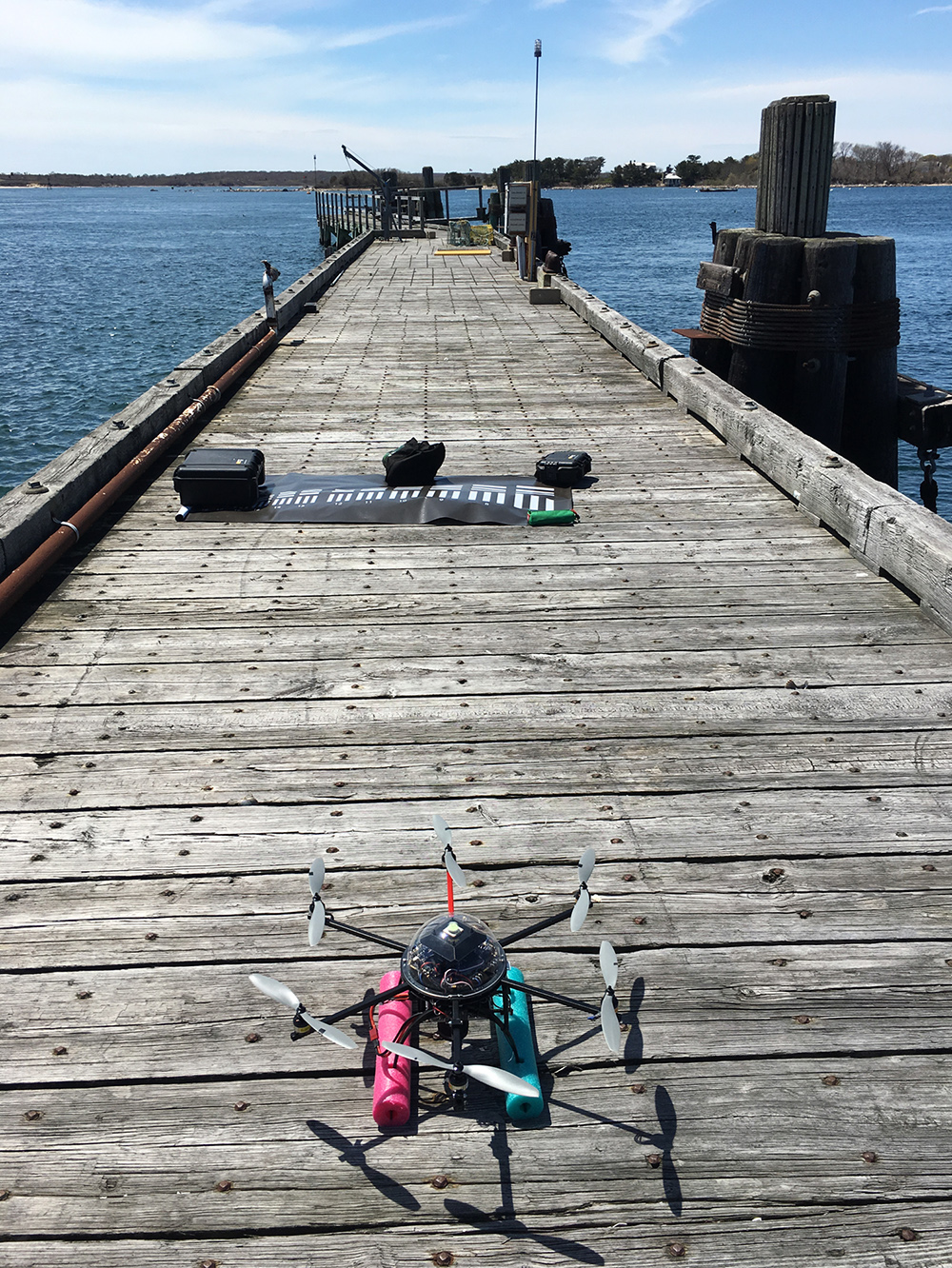 Ginger the Drone about to take off and hover above the calibration chart.
Ginger the Drone about to take off and hover above the calibration chart.
Check out the story we've written to accompany this episode, published in bioGraphic, the new multimedia magazine powered by the California Academy of Sciences. It includes lots more details, data, and photos from our reporting, and it sits alongside lots of other stunning stories and visuals—of the bats that pollinate Mexico and Arizona's agave harvest, the return of the mysterious Eurasian lynx, and the plight of a forgotten native bee.
 Sorting the catch aboard the Miss Emily.
Sorting the catch aboard the Miss Emily.
A special thanks to the Society of Environmental Journalists for awarding us a grant from the Fund for Environmental Journalism to report this story.
So many scientists, researchers, policy makers, and fishermen shared their expertise and perspectives with us for this story—many more voices than we could squeeze into one episode. (For some more of their insights, you should read our longform story in bioGraphic.) A huge thanks to:
• Biologists William (Bill) Hoffman and Nick Buchan of the Massachusetts Division of Marine Fisheries for taking us out to sea and teaching us the basics of fish sampling;
• Captain Kevin Norton and the crew of the Miss Emily for allowing us to spend a day trawling Massachusetts Bay with them (and feeding us fresh fish at the end of it!);
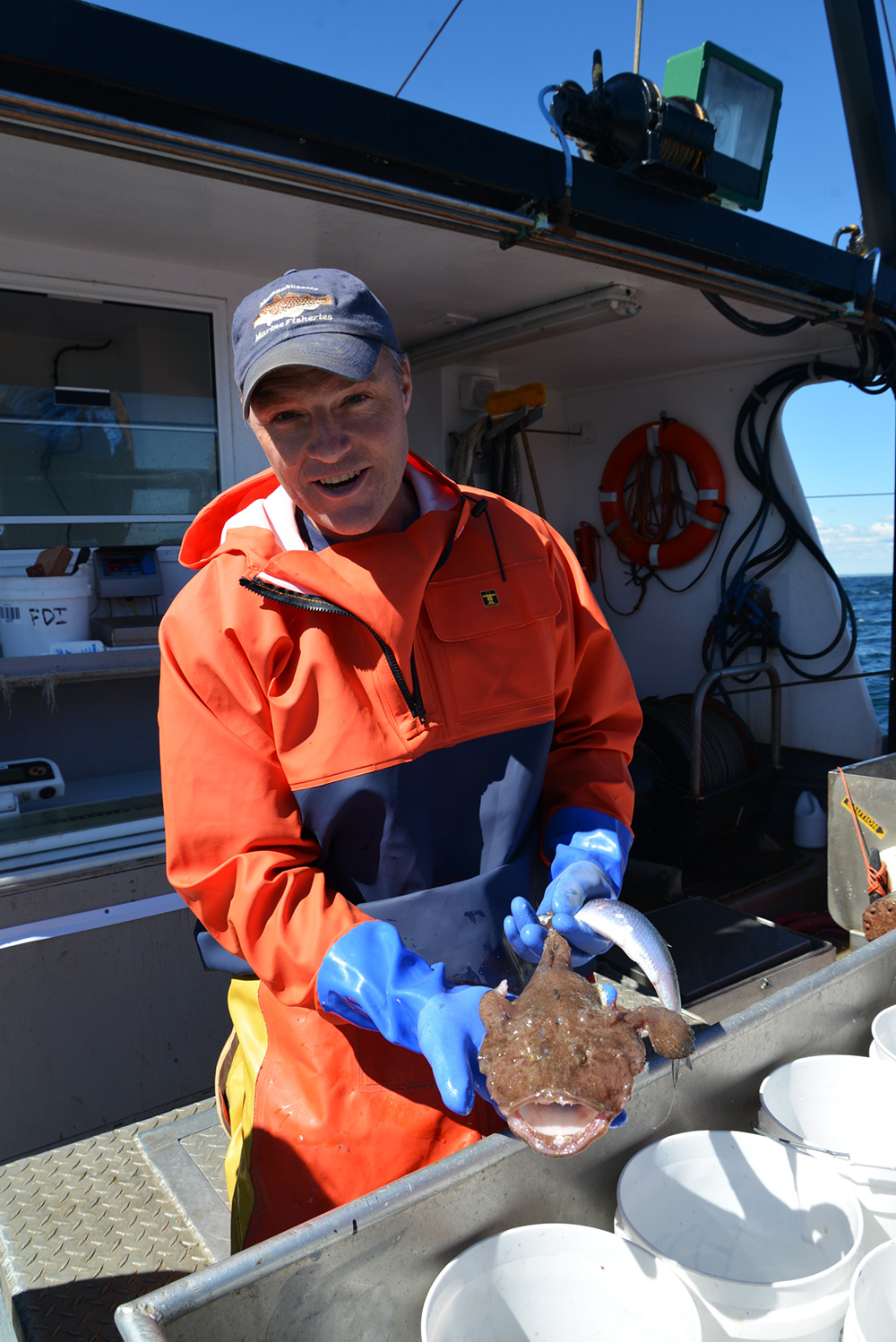 Bill Hoffman showing off a monkfish.
Bill Hoffman showing off a monkfish.
• Shelley Dawicki of NOAA/NEFSC Research Communications, who put us in touch with Bill and set up countless interviews to make sure we had the material we needed;
• Hanumant Singh, who works on underwater robotics and imaging for WHOI;
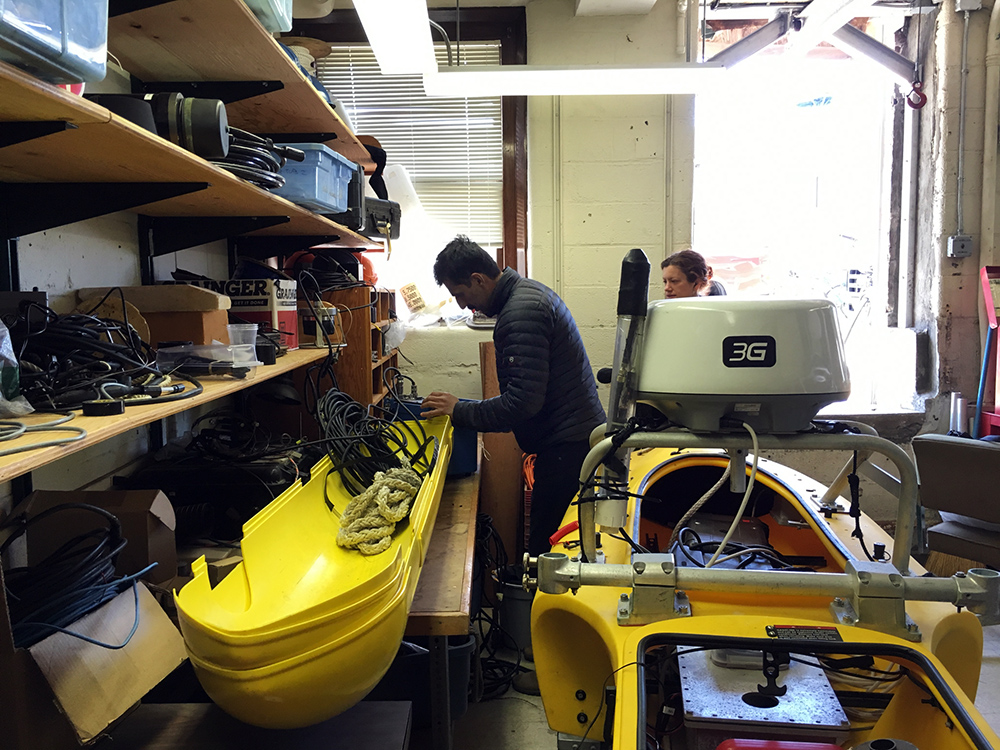
Hanu Singh with his AUV at Woods Hole.
• Elizabeth Clarke, research fisheries biologist on the AUV team at NOAA’s Northwest Fisheries Science Center, and Mary Yoklavich, who leads the Habitat Ecology Team at NOAAs Southwest Fisheries Science Center, who is taking the AUV out for a trial rockfish survey this month;
• WHOI associate scientist Scott Gallagher, who leads the HabCam group;
• Andrew Rosenberg, director of the Center for Science and Democracy at the Union of Concerned Scientists and author of a landmark study of historical resource depletion in the Gulf of Maine;
• Poul Holm, professor of environmental history at Trinity College Dublin;
• Andrew Pershing, Chief Scientific Officer at the Gulf of Maine Research Institute and author of a major study examining the impact of climate change on Gulf of Maine cod populations;
 Nick Buchan (left) and Bill Hoffman (right) counting and measuring fish. Hoffman's right hand is marking the fish length on the magnetic board as Buchan prepares to slide him the next fish.
Nick Buchan (left) and Bill Hoffman (right) counting and measuring fish. Hoffman's right hand is marking the fish length on the magnetic board as Buchan prepares to slide him the next fish.
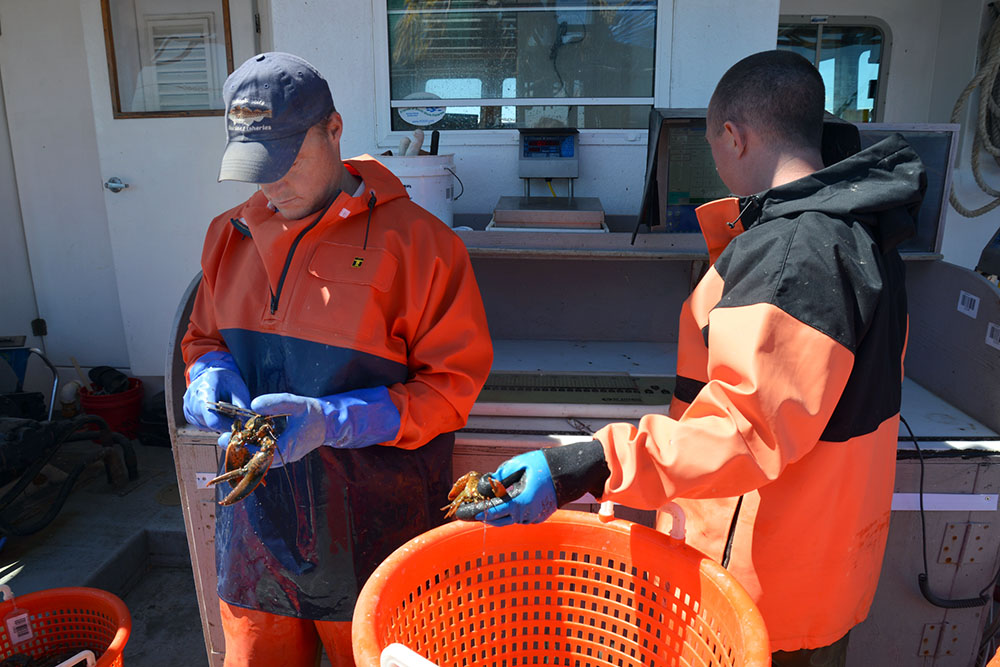 Bill Hoffman (left) and Nick Buchan (right) counting and measuring lobsters.
Bill Hoffman (left) and Nick Buchan (right) counting and measuring lobsters.
• NOAA NEFSC research fishery biologist and stock assessment task force supervisor Chris Legault;
• James Weinberg, chair of the NOAA NEFSC Northeast Regional Stock Assessment Workshop;
• Gareth Lawson, assistant scientist at WHOI, whose research focuses on using acoustic methods to understand marine ecosystem dynamics;
• Tim Stanton, scientist emeritus at WHOI, who studies the physics of acoustical scattering;
• Sofie van Parijs, who leads the NOAA NEFSC Passive Acoustics Group;
• Molly Lutcavage, research professor at University of Massachusetts Boston and Director, Large Pelagics Research Center, who, together with spotter pilot Mark Brochu, NOAA NEFSC research fishery biologist Michael Jech and NOAA's Jennifer Johnson, are working on using aerial photography to count tuna;
• Heidi Marotta from NOAA NEFSC's Data Management Systems and Nancy McHugh from NOAA NEFSC's Ecosystems Survey Branch for explaining the evolution of fish counting software, from paper and pencil to FSCS, the Fisheries Scientific Computer System;
• John Our, a Cape Cod-based fisherman, and Nancy Civetta of the Cape Cod Commercial Fishermen's Alliance.
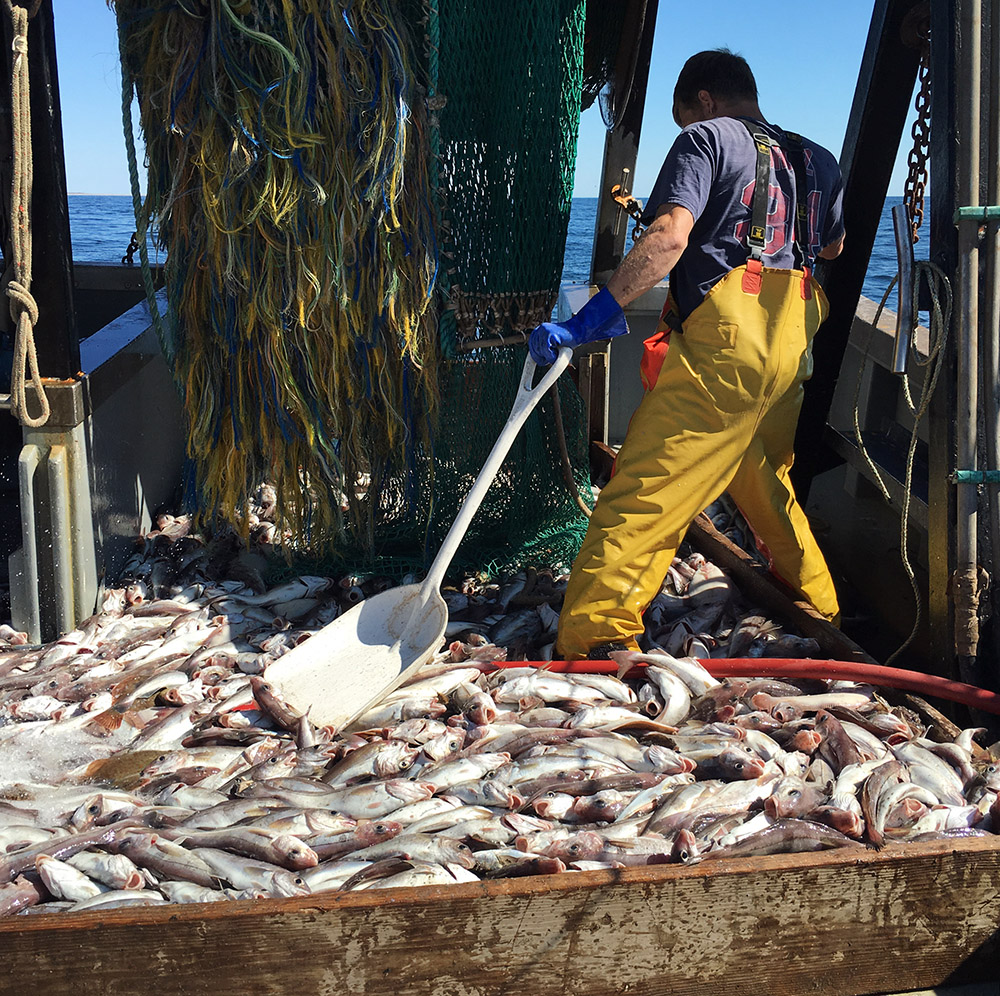 A huge haul of haddock from the final trawl of the day aboard the Miss Emily.
A huge haul of haddock from the final trawl of the day aboard the Miss Emily.
For a transcript of the show, please click here. Please note that the transcript is provided as a courtesy and may contain errors.